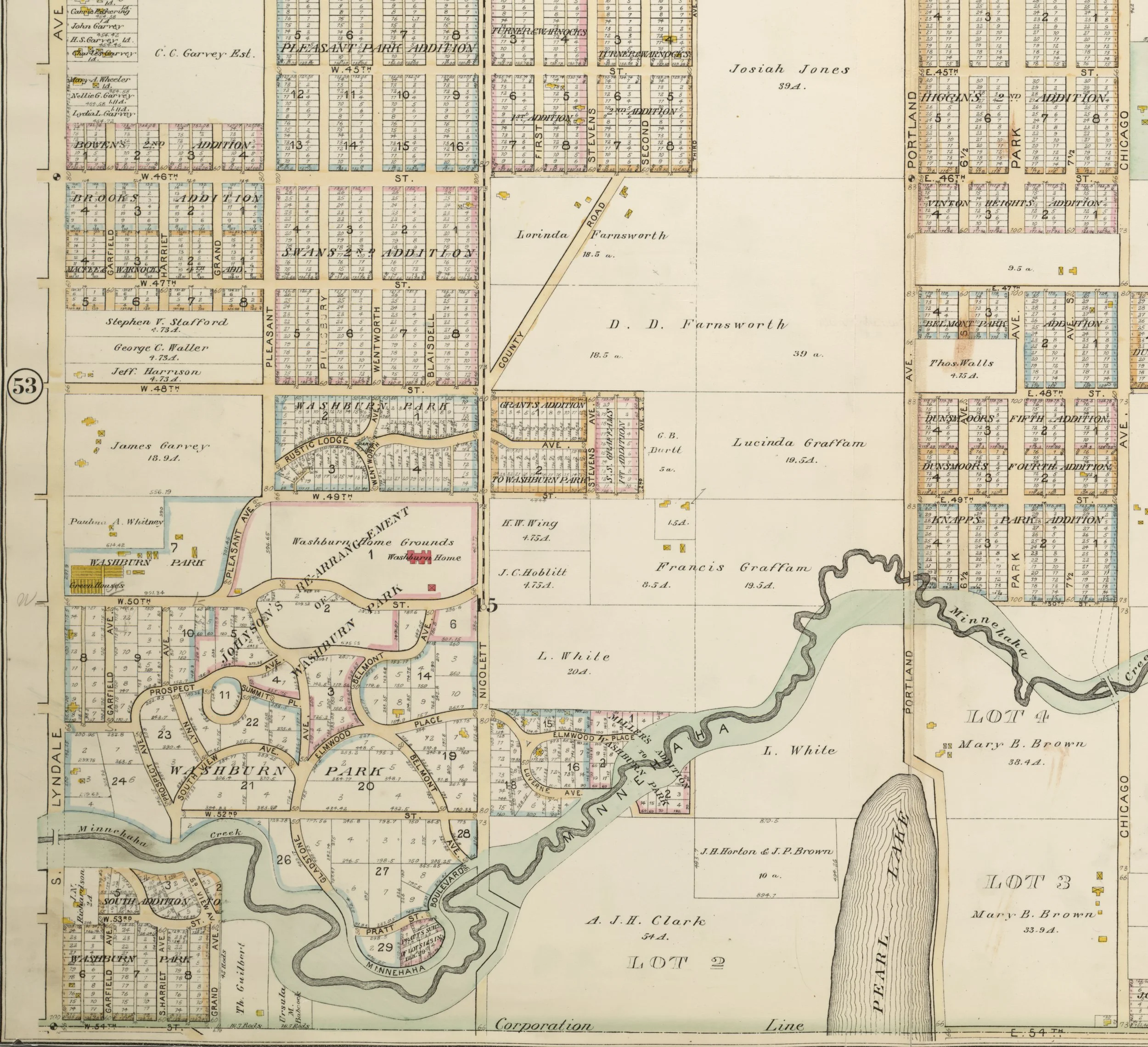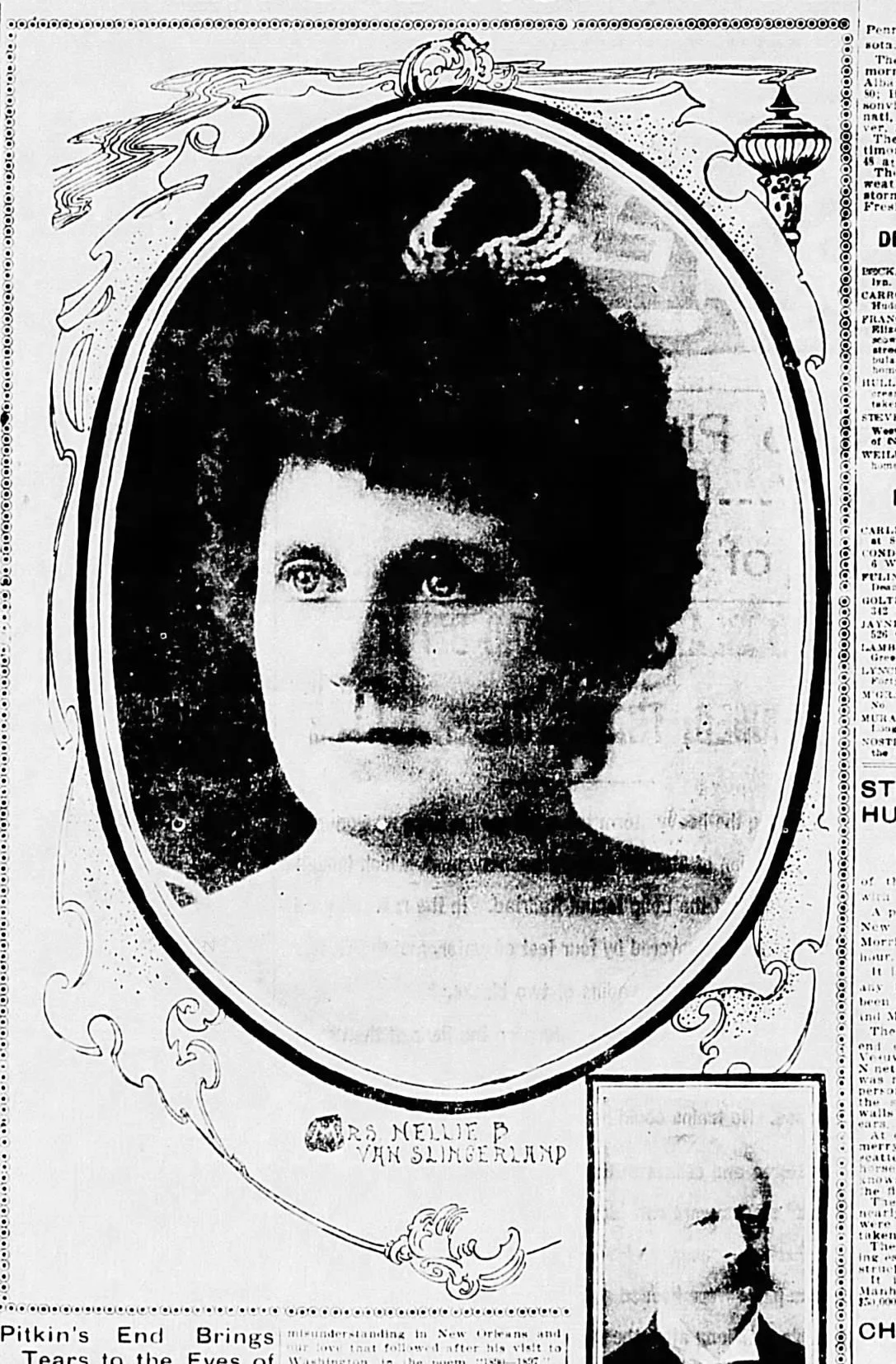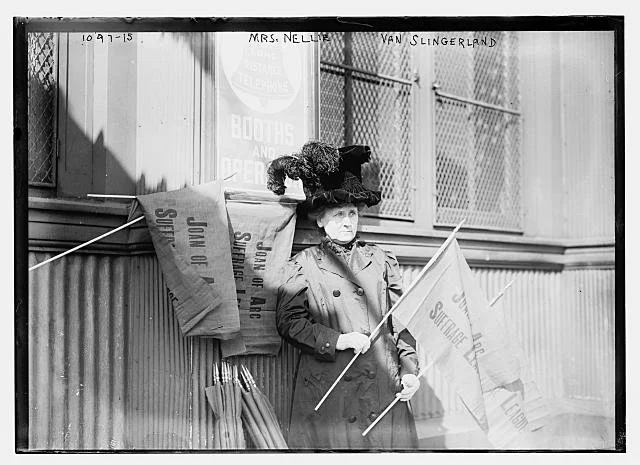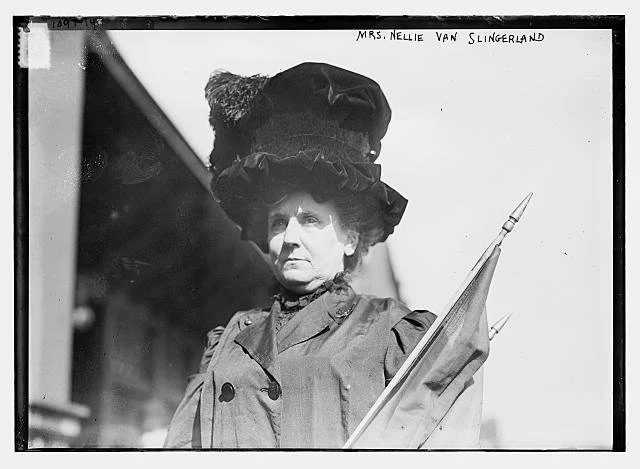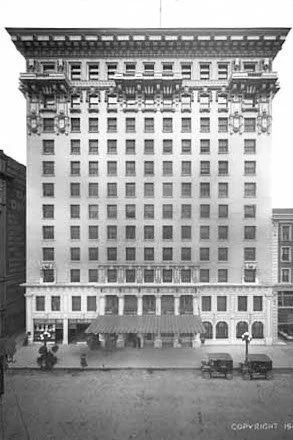Rustic Lodge
When I set out to explore the “Tiny Parks of the Twin Cities” I was expecting to find some quirky flower gardens or maybe some bureaucratic anomalies. Instead, I found stories of people determined to find creative and heartfelt uses of unwanted land, build community and even solve housing inequities.
The Rustic Lodge Triangle Park at the intersection of West Rustic Lodge Avenue and Wentworth Avenue in south Minneapolis turned out to be a much bigger story than I bargained for. The tiny, unassuming patch of green located just north of Justice Page Middle School seems to be little more than a roadside median. But a deeper look reveals a connection to a woman who left an indelible mark on both Minneapolis and the early history of Los Angeles. The park’s name hints at a grand plan that was never realized: a magnificent rustic lodge designed for a woman named Nellie Bingham Mead. The story of why the lodge was never built is a tale of an extraordinary life that transcended the expectations of her era.
Nellie Bingham Mead moved to Minneapolis in 1884 with her second husband, William. An independent spirit, she quickly established herself as a shrewd real estate investor, buying, selling, and leasing properties across the Twin Cities. Her mother, Charlotte, joined her, and the two became fixtures of Minneapolis’s social scene. Two years later, Nellie made a bold move for the time, publicly divorcing William on grounds of adultery and abuse.
Around this time, Nellie bought a twenty-acre plot of land in an area known as Washburn Park. At the time, the land was still very much out in the countryside but the presence of a mansion built by the milling magnate William Washburn was a huge draw. Nellie hired a young and relatively untested architect, Harry Wild Jones, to design her country home: an octagonal-shaped "cabin" for which the avenue was named. The proposed “Rustic Lodge” was a work of art, featuring a unique blend of horizontal and vertical log construction and a skylight adorned with antlers. The foundation was laid, but the project was stalled. Perhaps due to the death of her mother in 1897, Nellie lost interest, and the grand Rustic Lodge was never completed.
This is where I expected the story of the Rustic Lodge Triangle to end, but as I continued to follow the path of Nellie’s life I couldn’t believe the events and the impact that kept unfolding in her life.
In 1890, Nellie married William Harcourt Lynn, another prominent Minneapolis real estate investor and future state representative. Together, they were a power couple in Minneapolis, their social events and real estate deals frequently documented in the newspapers. Despite their high profile, their marriage was short-lived. By 1893, Nellie and William were often apart, with Nellie on the West Coast recovering from "nerves" and William pursuing ventures in Costa Rica. They quietly divorced in 1896.
This pattern of breaking with convention continued. Now using the name Nellie Van Slingerland (a version of her maiden name), she found herself embroiled in a major scandal in Washington, D.C. After an affair with a high-ranking official, she was sued for blackmail. Unintimidated, Nellie turned the tables. The investigation into the lawsuit exposed not only her antagonist's dirty dealings and unflattering opinions of government officials, but also that he was the one who had broken the law. The scandal was so widespread that it forced his resignation and propelled Nellie into the public eye as a published author.
Nellie was a seasoned veteran of the legal system, using lawsuits to settle debts, enforce contracts, and even, at times, simply to prove a point. Her confidence and legal savvy became an asset to the next phase of her life: the fight for women’s suffrage. In 1909, she became a founding member of the Joan of Arc Woman Suffrage League in New York City. Her home served as a meeting place and a safe haven for women in need. By 1910, she was a pioneer, launching a weekly magazine for the organization, making her one of the country's first female publishers.
Nellie’s commitment to women’s rights was unwavering. She famously challenged anti-suffragettes, questioning their own adherence to the traditional female roles they so often espoused. Another legal battle with her landlord over rent became a public relations victory for the suffrage movement. By winning a settlement, she not only secured a lower rent but also demonstrated the organization's moral and financial integrity.
Through her suffrage work, Nellie befriended Dr. Mary Walker, another iconoclastic figure. Walker, a Civil War surgeon and Medal of Honor recipient, was a trailblazer who defied gender norms by wearing men's suits and refusing to be bound by traditional marital vows. When Walker fell ill, Nellie became her personal assistant and spokesperson, continuing their shared fight for women's equality.
After Walker’s death and the passage of the Nineteenth Amendment, Nellie moved to Los Angeles, ready for her next adventure. For a moment, she revisited her past, contacting Harry Wild Jones for the plans to the Rustic Lodge to build it in Hollywood. But once again, the lodge was never built. Instead, Nellie directed her formidable energy toward founding the "Woman’s Midnight Mission," a homeless shelter for women later operated under the name of the Betterment League. As a founding member of the Hollywood Chamber of Commerce, she was a driving force behind numerous public projects and was even known as the "Mother of Hollywood."
It's astonishing to think that a figure of such historical significance is tied to a small, unassuming park in Minneapolis. Nellie Bingham Mead’s story—her audacity, her intelligence, her determination—is a testament to the power of one person to defy norms and shape history. The unbuilt Rustic Lodge serves as a unique reminder of her early life, but it is her legacy in the women's suffrage movement and her profound impact on the early development of Los Angeles that truly cements her place in history. The next time you pass by Rustic Lodge Triangle, you’ll know it’s more than just a park—it's a monument to a fascinating and forgotten pioneer.







